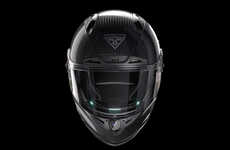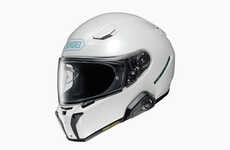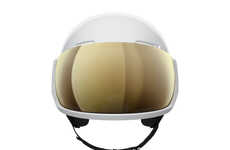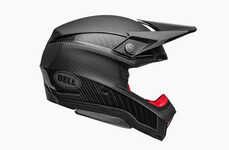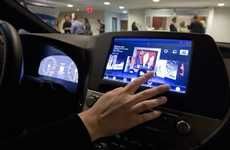
This Pilot Helmet Sees Through Planes to Improve Situational Awareness
Cadhla Gray — September 16, 2015 — Unique
References: rockwellcollins & wired
The incredibly expensive F-35 Lightning II joint strike fighter jet has had a long process to fruition, but the Gen III pilot helmet that goes along with it is well worth the wait. This technologically advanced helmet designed by Rockwell Collins enables pilots to see through the plane itself to visualize what's happening beside, below and behind the aircraft. Using built-in cameras surrounding the plane, the helmet's visor connects to the corresponding camera's feed as the pilot turns their head left, right or down.
This helmet also miraculously enables pilots to point missiles with their eyes, while the plane's statistics like altitude, speed and weapon status are always projected in their direct line of vision. Finally, this pilot helmet has built-in night vision, keeping both the pilot and the $100 million plane safer.
Moving from military to commercial uses, this helmet display design could have implications for firefighters, construction workers or even drivers on the road.
This helmet also miraculously enables pilots to point missiles with their eyes, while the plane's statistics like altitude, speed and weapon status are always projected in their direct line of vision. Finally, this pilot helmet has built-in night vision, keeping both the pilot and the $100 million plane safer.
Moving from military to commercial uses, this helmet display design could have implications for firefighters, construction workers or even drivers on the road.
Trend Themes
1. Augmented Reality Helmets - The use of augmented reality in helmets allows users to visualize their surroundings in real-time, enhancing situational awareness and safety in various industries.
2. Smart Visor Technology - Incorporating smart visors with camera feeds and vital information display provides users with a 360-degree view and real-time data overlay, revolutionizing how professionals interact with their environment.
3. Eye-guided Control Systems - Eye-tracking technology integrated into helmets enables users to control devices and perform tasks simply by using eye movements, opening up new possibilities for hands-free operations in multiple sectors.
Industry Implications
1. Aviation - Applying 360-degree vision helmets in aviation can significantly improve pilot situational awareness, boosting safety and navigational capabilities in the skies.
2. Firefighting - Integrating augmented reality helmets in firefighting can enhance firefighters' ability to visualize hazards and communicate effectively, maximizing their safety and efficiency during operations.
3. Construction - Utilizing helmets with smart visor technology in construction sites empowers workers with real-time information about their surroundings, promoting better decision-making, and preventing accidents.
4.8
Score
Popularity
Activity
Freshness



